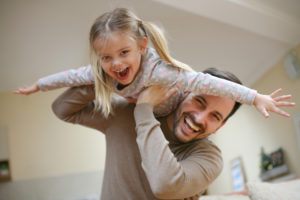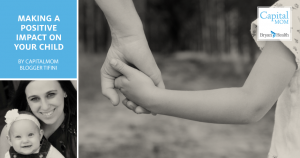You’re either strict or you’re not, with very little consideration for the large grey area in between. If you could place these two descriptions on a parenting scale, you might see “strict” at the same end as authoritarian and “non-strict” at the same end as permissive.
Transitioning From a Strict Parenting Style
I am a strict parent, but there are several reasons why I decided to re-evaluate my parenting style. Every parent wants the best for their child, and it’s this desire to keep kids safe and healthy that fuels my rule-setting and need for control. But changing the parenting style that my family was already adjusted to was not an easy task. It’s mentally and emotionally exhausting for both parents and children as we navigate the transition.
Why My Parenting Style Needed to Change
I realized that I needed to lighten up my parenting style when “the good child,” Cohen asked for something and I immediately said no. He has never done anything to make me question his intent or actions. But I work in the media and think the worst of every possible situation. So, when he asked me if he could walk to Scheels after school with his friends, there was no discussion. It was a flat, hard no. Later, I started wondering if I was being unreasonable, too strict. He is 12 years old, and my gut said, “No, that’s way too young to walk.” There are a lot of reasons why I shouldn’t have let him go, but at what age do I give a little and stop being the strict parent?
Our Conversation with the “Good Cop”
Before my immediate no, I should have asked questions and allowed him to justify why he should go, but he asked me over the phone while I was at work, so I was short with him. I ended the conversation with, “We will discuss this at home with dad.” It wasn’t his favorite response, but usually dad is more lenient and open to his ideas.
When we arrived home, we talked. Dad was, of course, okay with the idea, but I still had some reservations. I hated the idea of him walking across a busy street to get to the store. I had never met these friends from school he was going with, and none of this sounded like a good idea. But dad thought we needed to trust him.
The Importance of Unified Parenting
It’s not uncommon for mothers and fathers to be on opposite sides of the “firmness fence,” each convinced that the other is doing it wrong or one person needs to give in. This leads to inconsistencies, mixed messages about rules and the undermining of each other’s authority. This can breed dishonesty, deceit and manipulation within children. Therefore, it is particularly important that we as parents are united in our approach to these issues and compromise.
So, with stipulations, we agreed to let him go. He needed to put his phone away while walking. He had to pay attention to cars and traffic. He had to FaceTime me when he arrived at Scheels. And lastly, he needed to be respectful to the employees and other customers in the store. I was still a nervous wreck the entire time I knew he was not at home or with an adult, but we agreed to allow him this independence.
Striving for Best Parenting Practices
The discussion and compromise showed follow-through and consistency, which are vital for heathy parenting. I was proud of the way Mitch and I handled the situation. We didn’t undermine each other. We listened and came together on a united front. This allowed me to be a little less strict. Until Cohen violates our trust, we will continue being negotiable with certain things. I feel like these are some of the elements of best parenting practices.
It’s important to remember that just because you are the stricter parent, it doesn’t mean that you’re a bad one. Strict parents create rules and boundaries to protect their children in a way that they believe will help guide them to success. If you’re looking to make changes to your parenting style or parent-child relationship, adopting some elements of easygoing parenting can be helpful. Creating an environment that balances both love and support and boundaries is very beneficial to our entire family.

Mallory Connelly
Babies & Toddlers








